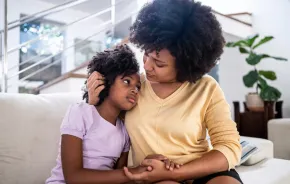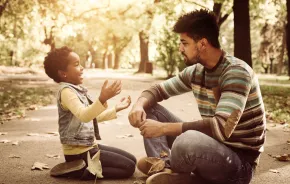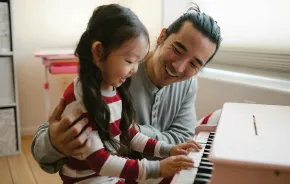
A child’s anxiety is stressful to the child and can also be stressful for the child’s family. Anxiety can actually be debilitating for kids. Children may spend endless amounts of time and energy fixated on things such as grades, family issues, peer relationships, and performance in sports, as well as disasters they think might happen or dangers that do not actually exist.
 Understanding the different types of anxiety and the options for treatment for children and adolescents is really important. Over the course of the last five to 10 years, the practice of mindfulness has received significant attention and gained recognition as an effective means of treating and managing childhood anxiety.
Understanding the different types of anxiety and the options for treatment for children and adolescents is really important. Over the course of the last five to 10 years, the practice of mindfulness has received significant attention and gained recognition as an effective means of treating and managing childhood anxiety.
Mindfulness is defined as the ability to pay attention to the present moment with kindness and curiosity and without judgment. The goal of mindfulness is to intentionally draw awareness to thoughts, feelings or sensations as they happen from moment to moment. Mindfulness helps children pay attention to the here and now, which allows them to distance themselves from what is upsetting them.
And the benefits of mindfulness practice are significant! Here are just a few of the many benefits of using mindfulness with children who are anxious:
- Helps bring attention back to the present, away from worries about the future
- Reduces stress
- Breaks the cycle of worry, where one fear feeds on another until it snowballs into full-blown anxiety or even a panic attack
- Teaches children to identify and accept emotions, rather than feel consumed by them
- Allows children to practice awareness and acceptance without judgment
Incorporating mindfulness into your family life can be quite simple. Parents don’t need previous experience to start using mindfulness with children. Begin by introducing your child to the practice and explaining how you will use it. You can let them know that mindfulness can be as short as three minutes or as long as an hour and that there are a range of styles and topics. One option is a popular app called Mind Yeti (read more on that). My personal favorite sessions for anxious kids include Anchor Your Boat, Candle Can Do and Tree In the City.
Once you have discussed mindfulness with your child, come up with a plan together for how you will use this. You can offer some choices concerning the length of their first session or the topic. By allowing your child to choose and help come up with the plan, you increase their buy-in to implement and participate in the practice. The more consistently and frequently you practice, the better. By practicing at the same time each day, you ensure consistency and increase efficacy.
Want a guide to help combat anxiety? Download these tips.











